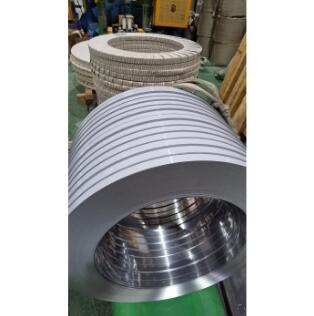Everything You Need to Know About 202 Stainless Steel Coil Strip
2024-12-21
When it comes to stainless steel products, the market offers a wide variety of options designed to meet diverse needs. Among these, 202 stainless steel coil strip has gained significant attention due to its affordability, durability, and versatility. Whether you’re working in construction, manufacturing, or decorative design, understanding the unique characteristics of this material can help you make informed decisions.
What is 202 Stainless Steel Coil Strip?
202 stainless steel is a chromium-nickel-manganese alloy belonging to the austenitic stainless steel family. It was developed as a cost-effective alternative to the more traditional 304 stainless steel. While 202 stainless steel contains less nickel, it compensates with a higher manganese content, resulting in a strong, corrosion-resistant material suitable for a wide range of applications.
A coil strip is essentially a flat, thin sheet of stainless steel that has been coiled for easy storage and transport. These strips are highly versatile and can be cut, shaped, and processed to meet the requirements of various industries.
Key Properties of 202 Stainless Steel Coil Strip
1. Corrosion Resistance
202 stainless steel is resistant to corrosion in a wide range of environments, though it is less effective in highly acidic or saline conditions compared to 304 stainless steel. Its corrosion resistance makes it suitable for indoor and some outdoor applications.
2. Strength and Durability
Despite its lower nickel content, 202 stainless steel maintains high tensile strength and durability. It can withstand mechanical stress, making it ideal for structural and industrial uses.
3. Formability and Machinability
The material is relatively easy to process, whether you’re cutting, bending, or welding it. This makes 202 stainless steel coil strips a popular choice in manufacturing and fabrication industries.
4. Aesthetic Appeal
With a bright, polished finish, 202 stainless steel coil strips are often used for decorative purposes. The material’s shiny appearance adds elegance to architectural designs and household items.
5. Cost-Effectiveness
One of the biggest advantages of 202 stainless steel is its affordability. By reducing the nickel content and replacing it with manganese, manufacturers have created a more economical option without compromising on basic performance.
Applications of 202 Stainless Steel Coil Strip
202 stainless steel coil strips are used in a variety of industries due to their adaptability. Here are some common applications:
1. Kitchenware and Utensils
The material’s corrosion resistance and polished finish make it ideal for manufacturing kitchen appliances, utensils, and cookware.
2. Construction and Architecture
From railings to wall panels, 202 stainless steel coil strips are often used in construction projects for their durability and aesthetic appeal.
3. Automotive Industry
Components such as trims, exhaust parts, and decorative accents in vehicles often use 202 stainless steel coil strips due to their strength and formability.
4. Industrial Applications
In industrial settings, the material is used to create equipment, storage tanks, and piping systems where moderate corrosion resistance is sufficient.
5. Decorative Items
The shiny and polished finish of 202 stainless steel coil strips makes them suitable for producing decorative items, signage, and fixtures.
202 stainless steel coil strips strike a balance between performance and cost, making them a versatile choice for a wide range of applications. With their strength, corrosion resistance, and aesthetic appeal, these strips are an excellent material for both functional and decorative purposes. If you’re looking for an affordable stainless steel option that doesn’t compromise on quality, 202 stainless steel coil strips might just be the perfect fit.



